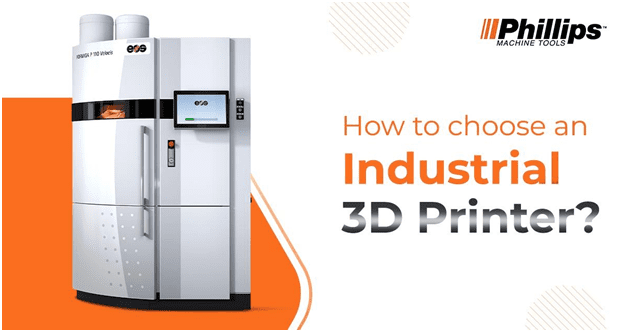Phillips Corp: How to choose an industrial 3d printer?
3D printing, also known as additive manufacturing, is one of the world’s fastest-growing technologies today. As a result, a growing number of businesses are utilizing this technology to boost production and revenue. The best thing about 3D printing is that it is an inclusive technology. It may be used by any organization, regardless of size, to create unique parts.
There are various advantages to 3D printing over traditional production. Parts may be printed in hours, with only a few minutes of operator time required to get started. This enables an iterative approach to manufacturing, where incremental changes are swiftly included in subsequent prototypes, allowing complicated components to go from idea to final designs in under a week.
By reading this article, we hope that you will have a better understanding of the many types of industrial printers available and their 3D Printing Processes, allowing you to make the best decision possible when purchasing one.
Fusion Deposition Modeling
FDM, also known as fused filament fabrication (FFF), is a printing technology that creates objects by melting and extruding thermoplastic material and depositing it layer by layer in the build area using a printer nozzle. FDM 3D printers are best for centimeters or more significant in size and don’t require a high level of surface polish. FDM printing is best for parts that have a mechanical purpose, such as holders and stands. The smallest printable feature size is a few to tens of centimeters, and anything lower than that would result in poor resolution in the printed product.
Stereolithography (SLA)
Stereolithography (SLA) printers use a laser to transform liquid resin into a stiff plastic, a process known as photopolymerization. Due to its high resolution, accuracy, and material diversity, SLA is one of the most favored methods among experts. SLA’s key advantage is its adaptability; SLA resin formulas may mimic conventional, engineering, and industrial thermoplastics’ optical, mechanical, and thermal properties.
Molds, tooling, patterns, medical models, and functional items may all benefit from SLA. It also has an excellent heat deflection temperature of 238 degrees Celsius, making it a perfect choice for various technical and manufacturing applications and the most biocompatible materials for dentistry and medical applications. The Formlabs SLA printers are also the fastest alternatives for 3D printing large items with Draft Resin, up to 10 times quicker than FDM. SLA’s extensive adaptability comes at a somewhat greater cost than FDM, although it is still less expensive than other industrial 3D printing methods.
Metal 3D Printing
Metal 3D printing is possible using a variety of industrial 3D printing technologies in addition to plastics. Extruded metal rods are kept together by polymer binders in metal FDM printers, which function similarly to standard FDM printers. To remove the binder, the completed green components are sintered in a furnace. Other types of metal 3D Printers are Selective Laser Melting (SLM) and Direct Metal Laser Sintering (DMLS), these printers use a laser to stack metal powder particles.
Choosing a printer is always a balancing act between financial and time commitments since most printers, regardless of technology, provide a more flawless printing experience right out of the box at a higher price. Premium printers, on the other hand, may have less open access and hence be more constrained if the intended use is bespoke. As a result, to select a suitable printer, the consumer should consider the present (and maybe future) anticipated applications and match them with printing technology while keeping time and cost in mind.
This content was originally published on the Phillips Corp website.

